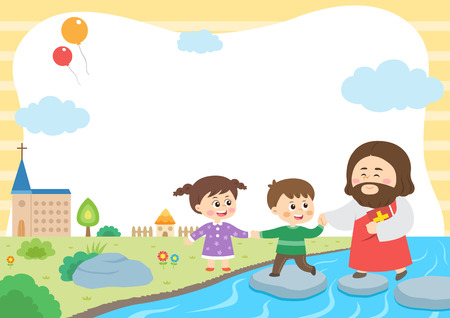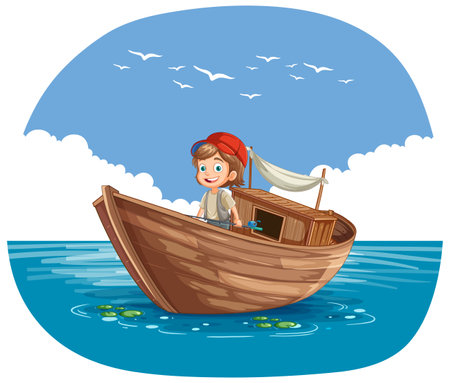1. Choose the Right Gear for Kids
Getting your kids excited about fishing starts with picking the right gear that fits their age, size, and skill level. The goal is to make their first fishing experience fun, safe, and easy to understand. Choosing kid-friendly equipment helps reduce frustration and builds confidence right from the start.
Start with a Kid-Sized Rod and Reel
Smaller hands need smaller gear. Look for a lightweight rod that’s about 3 to 4 feet long for younger kids (ages 3–6), and around 5 to 6 feet for older children (ages 7–12). A spincast reel is often the best choice for beginners because it’s simple to use—just push a button and cast!
Recommended Rod & Reel Sizes by Age
| Age Group | Rod Length | Reel Type |
|---|---|---|
| 3–6 years | 3 to 4 | Spincast Reel |
| 7–9 years | 46″ to 5 | Spincast or Light Spinning Reel |
| 10–12 years | 56″ to 6 | Spinning Reel (Optional) |
Tackle That Makes Sense for Beginners
You don’t need a complicated tackle box for your child’s first few trips. Keep it simple with a small selection of hooks, bobbers (floats), split-shot sinkers, and soft plastic baits or live bait like worms. These are easy to use and work well in most beginner-friendly fishing spots like ponds or calm lakes.
Basic Tackle Checklist for Kids:
- Bait: Live worms, corn kernels, or soft plastic grubs
- Hooks: Size 6 to 10 hooks (small enough for panfish)
- Bobbers: Clip-on round bobbers help kids see when a fish bites
- Sinkers: Small split-shot weights keep bait underwater
- Tackle Box: A small box with compartments makes organizing fun and easy
Add Fun with Kid-Friendly Designs
If possible, let your child pick out their rod or tackle box. Many brands offer gear in bright colors or themed designs featuring characters like Spider-Man, Barbie, or Baby Shark. This adds excitement and gives kids a sense of ownership over their new hobby.
Safety First!
Make sure all hooks have safety covers when not in use, and always supervise your child during setup and casting. Sunglasses and hats are also great for protecting their eyes and face from flying hooks or sun glare while fishing.
A Quick Tip:
Avoid buying expensive gear at the start. Kids grow fast—both physically and in skill—so start simple, then upgrade as they gain experience.
Selecting the right gear sets the foundation for a positive fishing experience. With equipment that fits them just right, kids can focus on the fun of learning how to fish without getting overwhelmed.
2. Pick a Family-Friendly Fishing Spot
Choosing the right fishing location is key to making your childs first experience fun, safe, and successful. Look for spots that are easy to get to, have calm waters, and are known to be stocked with fish regularly. These types of places help keep kids engaged and increase their chances of catching something — which makes the whole outing more exciting!
What Makes a Spot Family-Friendly?
When picking a fishing spot for kids, consider the following:
- Easy Access: Look for areas with nearby parking and short walking distances.
- Safety: Choose locations with flat shorelines, railings (if on a pier), and low boat traffic.
- Amenities: Bathrooms, picnic tables, and shaded areas can make the trip more comfortable.
- Stocked Waters: Places that are regularly stocked with fish give beginners a better chance at success.
Great Beginner Spots to Try
Here’s a simple comparison of common beginner-friendly fishing spots:
| Fishing Spot Type | Pros | Considerations |
|---|---|---|
| Local Ponds | Close to home, often stocked, calm waters | Limited space if crowded |
| Lakes | Larger area, good variety of fish species | Might require a longer walk or boat access |
| Community Piers | Piers often have railings, benches, and bait stations | Can be busy; watch for casting space around others |
How to Find These Spots Near You
- State Wildlife Agencies: Visit your state’s Department of Fish and Wildlife website for maps of public fishing areas.
- Tackle Shops: Local bait and tackle shops are great sources for insider tips on kid-friendly locations.
- Parks & Rec Departments: Many city parks have stocked ponds designed for family fishing days.
- Online Tools: Use Google Maps or apps like Fishbrain or Take Me Fishing to locate beginner-friendly spots near you.
A Quick Tip:
If possible, scout the location beforehand without your kids. This lets you check out safety features, restroom access, and how crowded it might get during peak hours.

3. Teach Them the Basics in a Fun Way
Now that your kids are excited and ready for their first fishing trip, its time to show them the ropes—but keep it light and enjoyable! Introducing basic fishing skills doesn’t have to feel like a lesson. Use playful, hands-on methods to explain the essentials like casting, baiting, and using a reel. When kids are having fun, theyre more likely to stay engaged and learn faster.
Make Casting a Game
Start by teaching your child how to cast. Instead of heading straight to the water, practice on the lawn or in the backyard. Use a practice plug (a rubber weight) instead of a hook for safety. Set up targets like hula hoops or buckets and turn it into a game—see who can land their cast closest to the target!
Casting Practice Tips:
- Use a lightweight spinning rod thats kid-friendly.
- Show them how to grip the rod and open the bail.
- Demonstrate an easy overhead cast slowly.
- Let them try, cheer them on, and keep it fun!
Baiting Without the Yuck
Baiting can be intimidating for kids, especially if youre using live worms. Start with artificial baits like soft plastic worms or corn kernels until theyre comfortable. You can even let them choose their own bait color to make it more exciting.
Kid-Friendly Bait Options:
| Bait Type | Description | Why Kids Like It |
|---|---|---|
| Soft Plastic Worms | Colorful and reusable fake worms | No mess and easy to handle |
| Corn Kernels | Canned corn used as bait | No smell, no slime—easy for beginners |
| Bread Balls | Mashed bread rolled into small balls | Simple and familiar material for kids |
Reel It In—Slow and Steady
Operating a reel can be tricky at first, so show your child how to turn the handle slowly and steadily. Let them feel what its like when theres tension on the line. If they catch seaweed or even nothing at all, celebrate their effort—it’s all part of learning!
Helpful Tip:
If youre using a spin-cast reel (the push-button kind), its much easier for young anglers to manage. Avoid complicated gear until they’re more confident.
Keep It Pressure-Free
The goal isn’t perfection—it’s participation. Let your child make mistakes without correction overload. Laugh off tangles, celebrate tiny catches, and take breaks when needed. Every moment is a chance to build confidence and create memories out on the water.
Remember: when you teach with patience, playfulness, and encouragement, your child will develop not just fishing skills but also a lifelong love for the outdoors.
4. Make It About the Experience, Not Just the Catch
When introducing your kids to fishing, it’s easy to get caught up in the excitement of catching fish. But especially for first-time anglers, the real goal should be creating a fun and memorable experience. Focus on spending quality time together outdoors, exploring nature, and making memories that will last longer than any fish story.
Shift the Focus from Fish to Fun
Instead of measuring success by how many fish you catch, think about how much your child smiles, laughs, and engages with the activity. Whether its skipping rocks, spotting wildlife, or sharing snacks by the water, every moment can be part of the adventure.
Ideas to Make Fishing More Than Just Fishing
| Activity | Why It Matters |
|---|---|
| Pack a picnic lunch | Makes the trip feel like a special outing |
| Let them explore nearby trails or creeks | Keeps their curiosity engaged even if the fish arent biting |
| Bring binoculars or a bug jar | Adds an educational nature element to the day |
| Take photos together | Captures moments to look back on later as a family |
Create Traditions and Build Memories
Kids love routines and traditions. Maybe you always stop for ice cream after fishing or let them keep a “fishing journal” with drawings of what they saw. These little touches turn simple outings into meaningful memories—and help your child associate fishing with joy and connection.
Quick Tip:
If your child seems bored or restless, take a break! Let them lead the pace and direction of the day. Sometimes tossing pebbles into the lake is more fun than waiting for a bite—and that’s perfectly okay.
The more relaxed and positive you are, the more your kids will enjoy the experience. After all, fishing is about more than just catching—it’s about connecting with each other and with nature.
5. Practice Patience and Celebrate Small Wins
Fishing is a game of patience, especially for young beginners. Kids might not catch a fish right away—or even after several tries—and that’s totally okay. What matters most at the start is helping them build confidence and enjoy the experience. Here’s how you can stay positive and keep your child motivated during their early fishing adventures.
Stay Positive and Set Realistic Expectations
Kids look to you for cues on how to react. If you’re calm, encouraging, and having fun—even when the fish aren’t biting—they’ll pick up on your energy. Avoid putting pressure on making a big catch. Instead, focus on enjoying the time outdoors together.
Examples of Positive Reinforcement
| Situation | What to Say |
|---|---|
| Your child casts but misses the water | “Great try! Let’s see if we can get it even closer next time.” |
| No bites after 30 minutes | “That’s part of fishing! Sometimes they take a while, but we’re doing great.” |
| Your child catches a tiny fish | “Awesome job! That’s your first catch—let’s take a picture!” |
Encourage Persistence with Fun Challenges
You can help kids stay engaged by turning small goals into fun achievements. Try simple challenges like:
- Casting five times in a row without tangling the line
- Catching their first fish (no matter the size)
- Baiting their own hook successfully
Create a mini “fishing badge” system or bring along stickers or small rewards for each milestone they reach. These little wins will make them feel proud and want to come back for more.
Create Memorable Moments Out of Every Success
A photo with their first fish, a high-five after their best cast, or just laughing over a tangled line—all of these moments matter. They build lasting memories and turn fishing into something your child wants to do again and again.
Quick Tip:
If things arent going well, take a break. Skip some rocks, have a snack, or explore nearby nature. The goal is to make every trip fun—even without fish.
By practicing patience and celebrating every small step forward, youre laying the foundation for a lifelong love of fishing in your kids.


